The objective of the Stochastic Cognitive Model, or SCM for short, is to ensure a realistic representation of traffic in the simulation in a wide range of different scenarios, both uncritical and critical, including possible collision scenarios. This is achieved by modelling cognitive processes and, based on this approach, ensuring realistic traffic interactions between virtual agents in both small and large numbers.
The SCM enables this realistic driver and traffic behaviour in motorway scenarios in multi-agent traffic simulations by modelling the driver's cognitive processes and combining these with stochastically distributed driver parameters. Cognitive processes include perception based on gaze behaviour, decisionmaking, and reactions in all kinds of traffic scenarios. Finally, an important contribution to realistic simulation is the inclusion of intentional or unintentional human failure, whether perception-based or cognition-based.
Together with partners, BMW has been developing the Stochastic Cognitive Model since 2014. As a result of many years of development, the SCM has now achieved a release for motorway scenarios that enables a wide range of applications to assess the safety impact of automated driving systems. Currently, the SCM is designed to operate only on motorways. Enabling SCM for urban scenarios is planned, but it is still work in progress. Stay tuned!
WHAT IS THE SCM?
- SCM Highway traffic 3 lanes
- SCM Highway traffic urban scenery
- SCM Highway traffic urban scenery overtaking and switching lane
- SCM Highway traffic jam
- SCM Highway traffic exit scenario
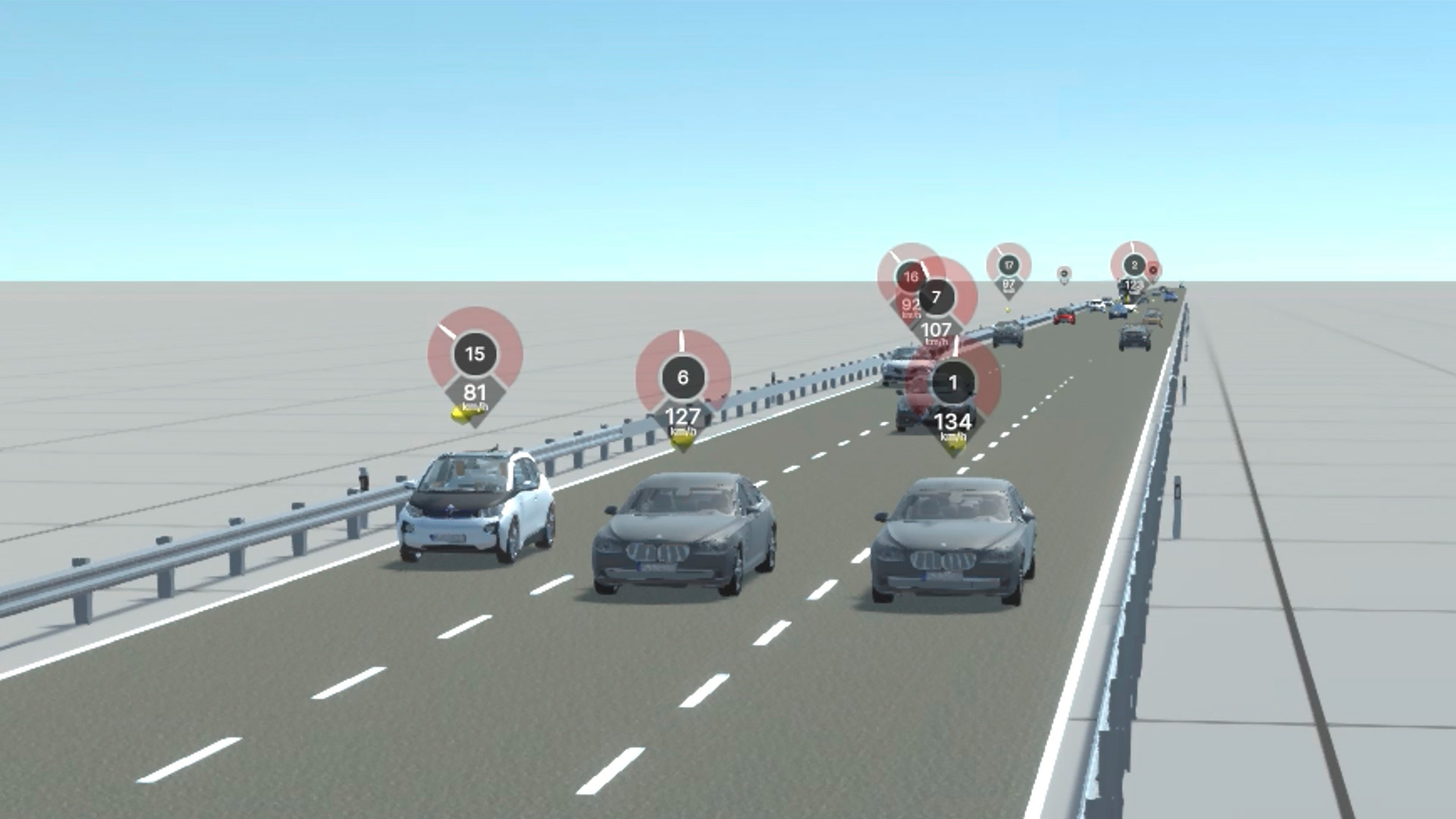
In this video, a motorway traffic scenario with three lanes is simulated. Multiple SCM agents drive on this motorway, constantly overtaking and switching lanes.
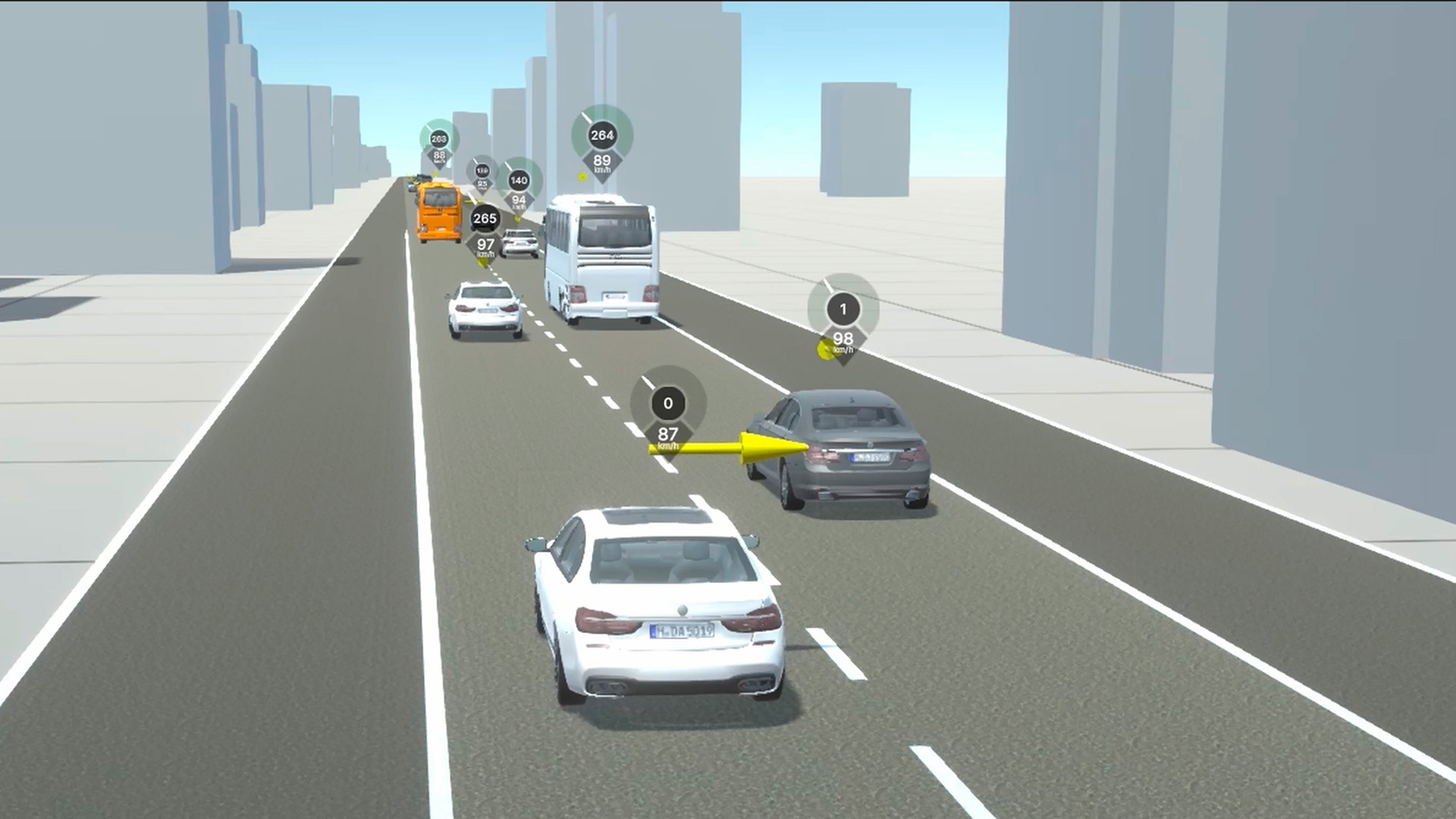
In this simulation, an SCM agent is shown driving through an urban landscape on a two-lane road, surrounded by traffic.
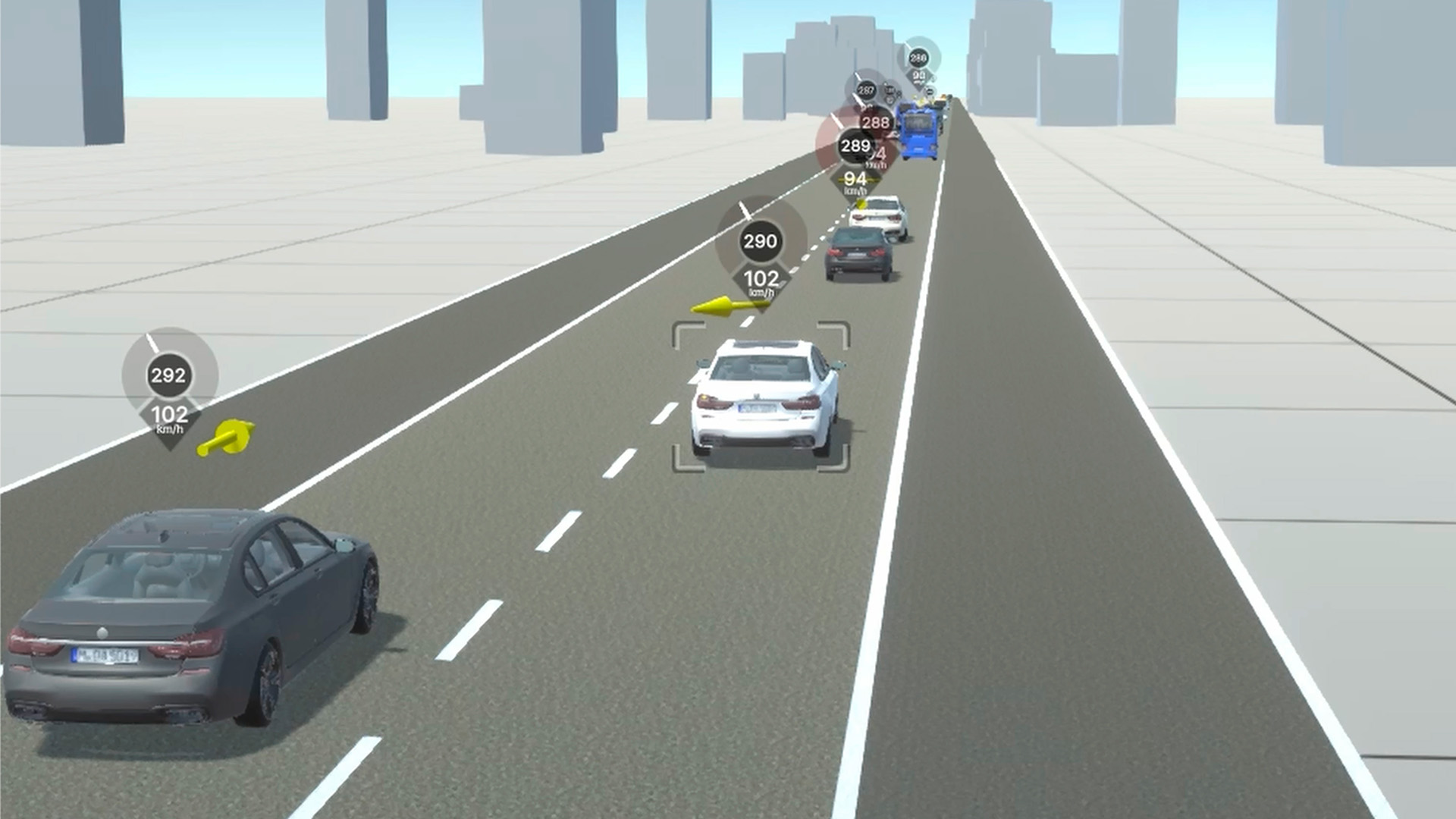
In this simulation, an SCM agent drives through an urban landscape on a two-lane road, overtaking and switching lanes, surrounded by traffic.
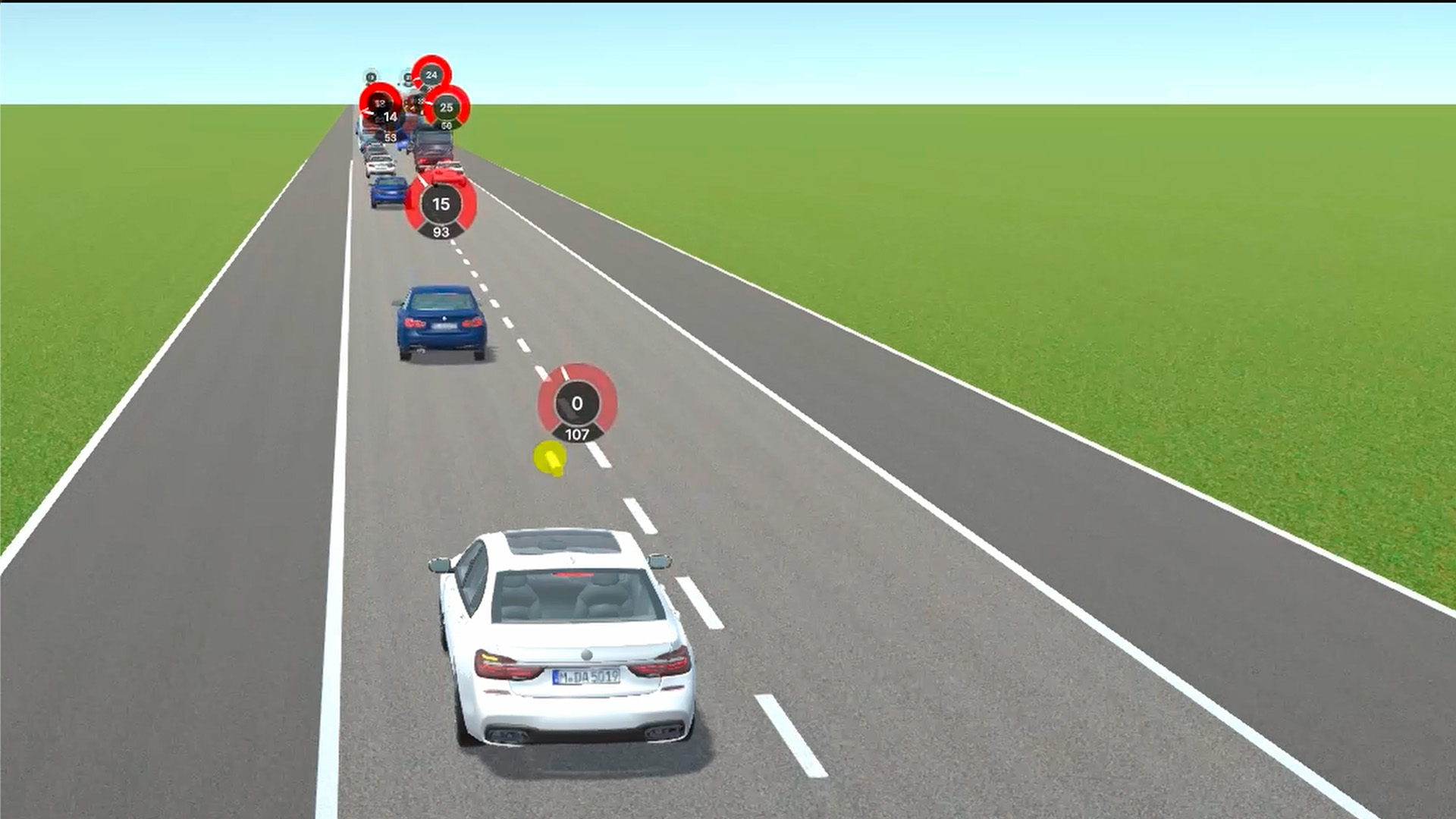
In this simulation, an SCM agent on a motorway encounters the tail-end of a traffic jam.
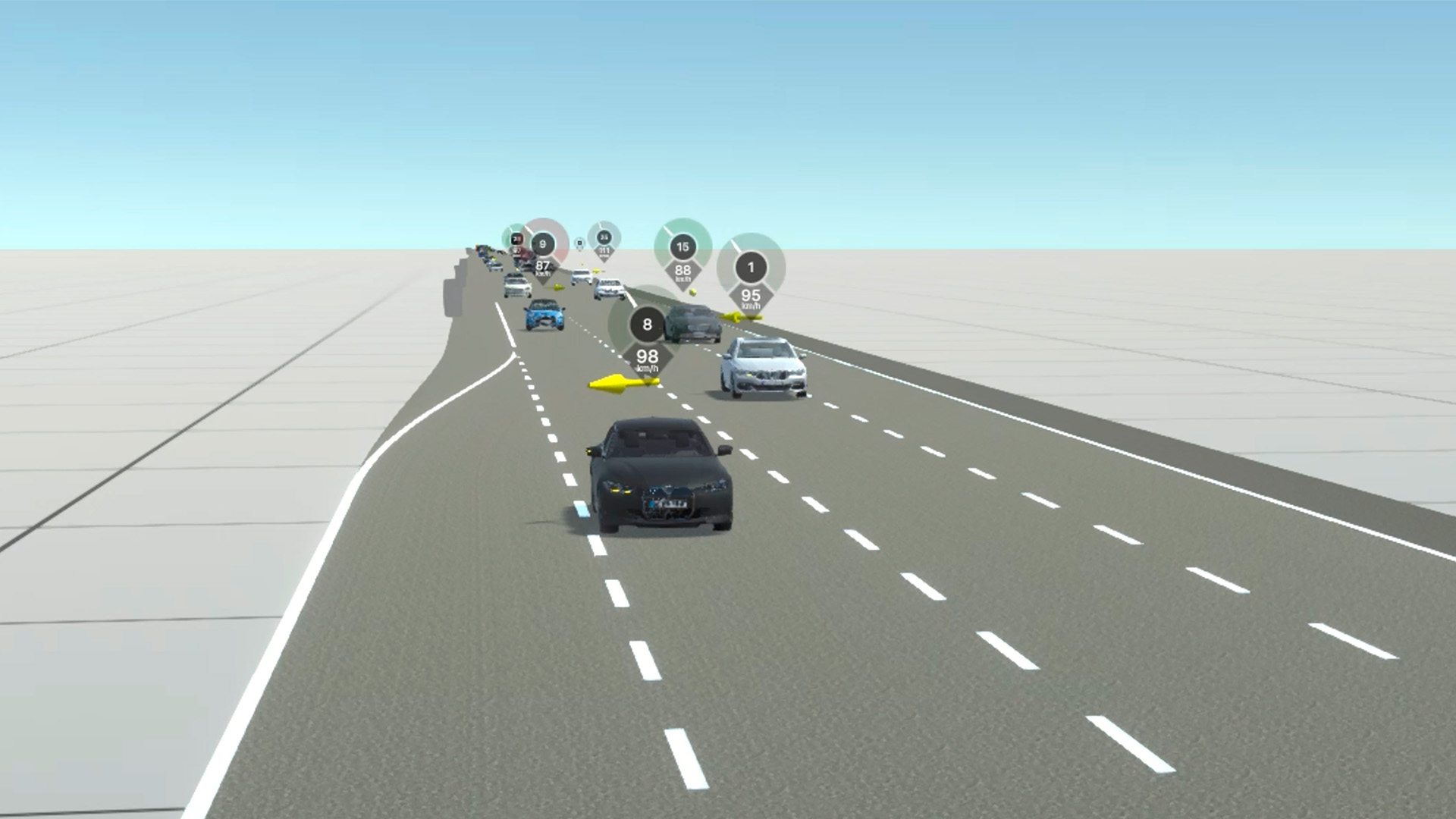
In this simulation, SCM agents on a motorway pass by an exit lane, some of them signalling and preparing to exit.
SAFETY ASSESSMENT WITH THE SCM.
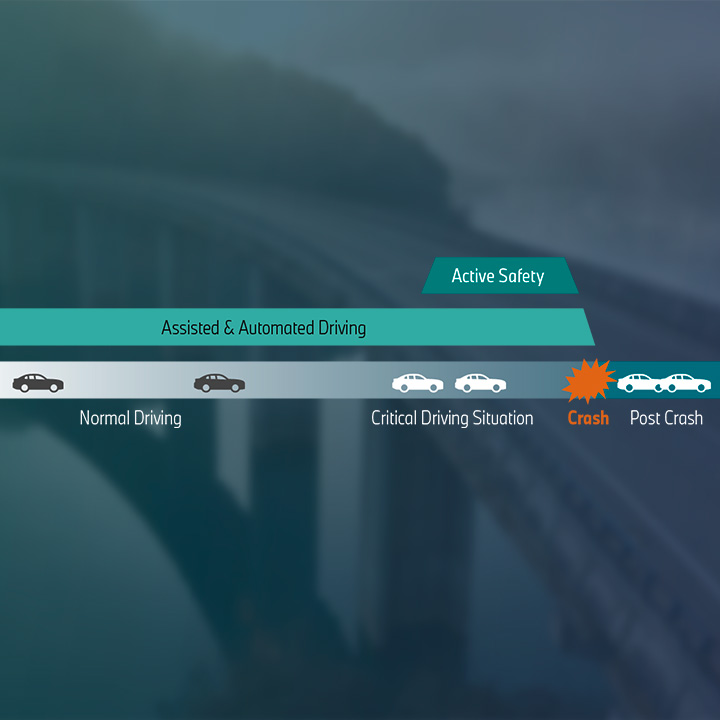

The application for which the Stochastic Cognitive Model was mainly developed is the virtual safety assessment of advanced driver assistance systems and automated driving systems. Within the approach of virtual safety assessment, traffic scenarios are generated stochastically. For the purpose of assessment in these scenarios, a sophisticated driver behaviour model such as the Stochastic Cognitive Model is required in order to obtain realistic trajectories for the vehicles involved in the scenario, from uncritical to critical scenarios and including potential collisions.
However, the Stochastic Cognitive Model actually has two roles to play in virtual safety assessment. First, in any assessment that involves a comparison between the technology (treatment condition) and the human driver (baseline condition), the SCM driver model defines the baseline to which the technology is compared to. The second purpose of the driver model is to generate realistic surrounding traffic. As there are numerous interactions between the vehicle under test and the surrounding traffic, the realistic modelling of the latter is as important as the definition of the baseline by the SCM driver model.




